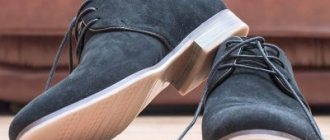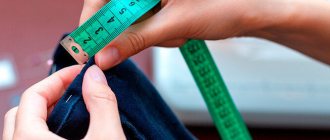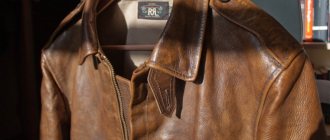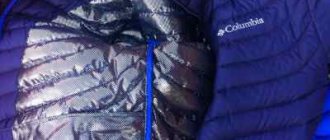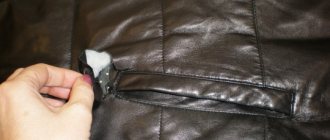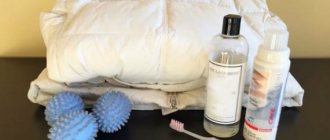Leather clothing amazingly transforms a woman! Even if a mature lady puts on a leather skirt, jacket or sundress, she will seem to become younger. And what can we say about young fashionistas! Especially this season, when leather clothing has become one of the main fashion trends. Modern natural and artificial leather is well-made, pleasant to the touch, and beautiful in appearance. It fits well into a woman's wardrobe and is appropriate in different styles and situations.
One thing is annoying: such products cannot be thrown into the drum of the washing machine to freshen them . And while ladies have learned to cope with caring for leather uppers, some have problems with the lining. In fact, it's not that complicated. We will tell you how to properly care for her.
How to properly care for a leather jacket
To make your product last longer, follow these simple rules:
- Do not expose the jacket to extreme wetness. We do not recommend washing it by hand or in a machine. If you are caught in heavy rain or snow, when you return home, pat your jacket dry with paper towels and hang it to dry.
- Dry your leather product naturally. Avoid exposure to sunlight and heating devices.
- Clean your leather product regularly; if stains appear, try to remove them immediately.
- First test the new cleaning agent on a small area of the product, in an inconspicuous place.
- Use special impregnations to soften and protect the skin. Or periodically wipe the entire surface of the jacket with glycerin, castor oil or baby cream.
How to quickly clean dirt from a jacket
Remove traces of dust and rain stains as they appear. It's easy to do:
- Prepare a simple soap solution, add ammonia to it.
- Take a soft rag or sponge, soak it in soapy water and gently wipe the contaminated areas, being careful not to stretch the skin. Movements should be gentle.
- Rinse the sponge, remove any remaining soap from the surface of the jacket, and dry thoroughly.
- Apply a special protective spray or glycerin to dry skin.
Special means
Sprays designed for leather care not only remove dust and dirt, but also disinfect and renew clothes. For convenience, most products of this class are available in spray bottles, which greatly simplifies the work.
It is also possible to restore the tarnished coating using various aerosol paints and remove minor scratches with a product that comes in the form of liquid leather. Among household chemicals, there is a wide selection of water-repellent compounds designed to protect against the negative effects of water.
Removing stains
We will not describe how to use stain removers; information about this is in the instructions from the manufacturer. Let us tell you what available means you can cope with various contaminants:
- To remove grease stains or glue marks, soak a cloth in gasoline or white spirit and gently wipe the stained area.
- Baby massage oil will help remove paint marks.
- If you soak a napkin in alcohol, you can easily remove ink stains.
- Remove dirt remaining after rain or snow with a soft sponge soaked in vinegar.
- The following tip will help you clean and refresh the color of a brown jacket: wrap coffee grounds in a clean rag, lightly wet them with water and wipe the entire surface. Instead of coffee, you can also use a bag of black tea.
- Wash fresh blood stains with cool soapy water. Hydrogen peroxide helps a lot: soak a cotton pad in the liquid and wipe the stain, moving from its edges to the center.
Cleaning the collar, sleeves, pockets
There are several ways to clean a greasy collar:
- For light stains, soak a cotton pad in makeup remover milk and wipe the collar. Repeat the procedure several times.
- Moisten a cloth with alcohol and treat the dirty surface. The next step is to wipe the cleaned area with a sponge soaked in lemon juice. At the end of cleaning, apply glycerin.
- Remove old stains and gloss with gasoline.
- The knitted collar can be washed carefully, making sure that no water gets on the skin. Wet the collar with warm water, wring it out, soap it, and rub the dirty areas. Rinse in clean water and wring out. Dry your skin with paper towels.
Greasy areas on sleeves, lapels, and near pockets can be wiped with a cut of onion or orange peel. This method is not suitable for light skin, as streaks may appear.
Another option for removing shiny areas is to prepare a solution of water and ammonia, taken in equal parts. Soak cotton wool in this solution and walk over problem areas. Apply moisturizer to your skin.
Traditional methods of cleaning suede
Soap solution
Soapy water is not prepared for dipping, but to obtain a liquid that will affect trapped dirt, weaken the degree of their adherence to the fibers and make it easier to clean out dirt particles later.
Use the solution only when dealing with stubborn dust and dirt. To obtain the working composition use:
- 5 parts water;
- 1 part ammonia.
After mixing the components, dip a sponge made of dense foam rubber into the solution, and then squeeze it out as hard as possible. And only after that they drive it through contaminated areas, each time moving against the pile. After waiting 5-10 minutes after treatment, additional wet treatment is carried out, but with a different composition.
It requires:
- 1 liter of clean water;
- 1 tbsp. a spoonful of ordinary kitchen vinegar 6%.
A minute after the second treatment, the surface of the product is thoroughly blotted with thick paper napkins, removing as much moisture as possible from the suede.
Soda milk
The composition is suitable for removing old street dirt. For the working solution you need:
- a glass of milk (cow's, goat's, or even store-bought and low-fat);
- 1 tbsp. l. baking soda.
After waiting for the powder component to dissolve, the problem areas are treated with the composition, squeezing the sponge as hard as possible. After 10 minutes, the area is minimally moistened again, but with vinegar water. Then blot it with paper material with good absorbency and dry the accessory by hanging it on a hook.
Ammonia
This substance copes well with shiny sides and greasy stains on suede products.
For application, use a solution by adding a tablespoon of ammonia to a glass of clean water. For better penetration, moistened areas are lightly treated with a stiff brush made of natural bristles or a special rubber one. After keeping the mixture on the surface for 3-4 minutes, the residues begin to be actively removed using cellulose wipes.
water vapor
Evaporation rising above boiling water can even out the villi in places with the greatest stress from touch. To improve the appearance of the bag, hold it over a hot “fog” for no more than 10 minutes. Then excess moisture is removed, the item is dried and brushed over the treated area.
Mechanical cleaning
This is the most popular method of treating suede surfaces, as it does not affect the chemical environment inside the villi and the skin itself. For processing the following is used:
- Special brushes made of rubber material. They may have false “bristles” in the form of straight or shaped grooves, or similar to regular ones, but with a small head.
- Clothes scrapers with bristles.
- No longer used or new toothbrushes.
- “Erasers” made of light rubber.
- Old crusty crusts from loaves of black bread.
Vinegar
However, like ammonia, it is better not to treat suede with pure vinegar, even if it is very greasy. The optimal composition of an acidic aqueous solution: 1 to 10, where the smaller part is the active component. After processing the product, it is immediately blotted to prevent moisture from penetrating into the very depths of the pile and skin.
Petrol
To clean suede from fat deposits, use only special and purified gasoline, which is sold in any hardware store. The substance evaporates quickly and therefore when working with it, a number of conditions are observed:
- Located outdoors or in a well-ventilated area.
- During this process, do not approach open flame sources. Do not smoke during the cleaning procedure.
Absorbent
Fresh, greasy marks are combated with powders with good absorbent properties. Suitable for this role are: drunk and dried natural coffee, activated coal crushed into dust (only for dark-colored accessories), soda, ordinary chalk (for light and white bags).
Salt
With its help, they prevent the fat in a fresh stain from eating deep into the surface of the material. Do not use on black and dark items due to the risk of streaks after accidental contact of the item with water. Both dry and slightly moistened salt are suitable for application.
Special means
Stores that sell suede items often offer care products. Usually this is a foam for applying to greasy surfaces or areas with salty stains - a common occurrence after walking along winter streets with ice reagents scattered on the asphalt. Their only advantage over homemade suede cleaning products is that they are completely ready for use.
Cleaning the lining
When putting your jacket in order, do not forget about the inside of the product. The best option is to tear off the lining and wash it in the machine, and then sew it back on. Of course, this will require a lot of time and effort, but there is a 100% guarantee that the leather jacket will not lose its appearance.
Another method involves cleaning the lining on the jacket itself. First, inspect the fabric to see if there are any stains or greasy areas on it. They are removed using a vinegar solution. Next, you will need to prepare the jacket: turn it inside out, hang it on a hanger over the bathtub. Apply warm soapy water, soak a sponge in it and work the entire fabric. Rinse off the soapy liquid with a small stream of water.
Important: act carefully and avoid getting moisture on your skin.
Gently wring out the fabric and dry with a towel. Without turning it right side out, hang it to dry on hangers in a ventilated area.
Features of cleaning a white or light jacket
A few practical tips will help you keep your product clean:
- To clean the product from dust, prepare a soap solution with the addition of ammonia.
- Cleaning with a mixture of egg yolk and milk will help restore the original color. After the product has dried, remove any remaining residue with a damp cloth.
- Rub the surface of the jacket with beaten egg white to add shine.
- Skim milk does an excellent job of removing fresh dirt and dust. In addition, the fats in milk make the skin soft and elastic.
- To clean shiny areas, add 1 teaspoon to 1 glass of milk. baking soda.
- Fresh lemon juice will perfectly whiten the surface and remove yellowness.
- Use a white eraser to rub the stained area. It removes pen marks well.
- To remove grease stains, use a solution of water and dishwashing detergent.
- It is recommended to remove complex stains of unknown origin using a mixture of talc and turpentine. Mix the components and apply the resulting substance to the contaminated area. When the mixture dries, brush it off with a soft brush. At the end of the procedure, wipe the treated area with a damp cloth.
Cleaning leatherette at home
This material is even more difficult to care for and requires the most delicate handling. It should not be twisted, vigorously shaken or treated with a very hot iron. Using a machine when washing will result in the item irretrievably losing its attractive appearance.
Products made from smooth and dense eco-leather can be washed, but only by hand and provided that there are no metal fittings on it that could leave rusty streaks on the light-colored material when wet. In the process, the usual friction with hands is not used: the surface is treated exclusively with a soft washcloth moistened with a soap solution.
Rinse by carefully lowering the item into a large container of warm water. To thoroughly remove residual cleaning agents, the bath is repeated 2-3 times.
- Faux suede should be cleaned with a soft brush after each use of the product. This protects the fibers of the item from dust and prevents it from matting.
- To degrease fresh oily stains, sprinkle them with salt and soda, and after a quarter of an hour, remove them with existing stain removers or prepared products.
